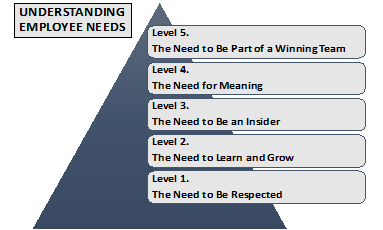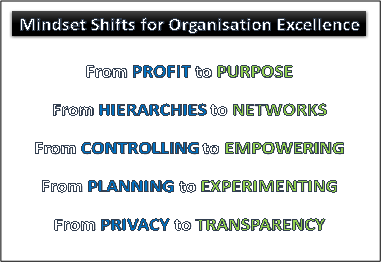There are four primary reasons leadership training fails to achieve business result.
1.Lacking Follow Through (treated as an Event, rather than a journey).
Whether it is two days, five days, or three weeks, if leadership training is a one-time event, then its impact on organisational behaviour will be negligible. In the book Primal Leadership, the authors reiterated that,
“The thinking brain can comprehend something after a single hearing or reading. The limbic brain, on the other hand, is a much slower learner— particularly when the challenge is to relearn deeply ingrained habits. This difference matters immensely when we are trying to improve leadership skills.”
A leadership development event will not turn you into an exceptional leader. To achieve this requires the development of many skills, with spaced repetition, and consistent application over a routinized period of time.
2. Lacking effective emotional intelligence.
Again, because most training is event-based, your knowledge of emotional intelligence is limited to what you can glean from a single sitting. It takes time, repetition, and consistent application for managers to overcome their fear of losing control enough to trust people and allow them to work without supervision. You have not developed emotional intelligence until you have learned to manage your emotions and behave in a way that brings out the best in everyone. (Try the Emotional Quotient Quiz)
3. Lacking accountability.
Most leadership development initiatives do not require leaders to be accountable for applying what they have learned. In most cases, it is entirely up to the individuals to decide how much of what they have learned they will apply. Far too often, the application is zero; they slip back into their old habits, and nothing changes.
4. Lacking trust.
It is a recognised fact that trust is the foundation of all successful relationships, and organisations cannot achieve their potential without a consistently high level of trust with their employees and customers.
Real Leadership
There have been many divergent views on what leadership is and so much written about it, that it has leaders focusing on themselves. True and Trustworthy Leadership focuses on others and not self. “He who is greatest must be he who serves most “is a The Leadership Truth. It’s the self-focused leaders that switch people off. Jim Collins expresses it well in the book Good to Great with his description of the Levels of 5 leaders: “Level 5 leaders blend the paradoxical combination of deep personal humility with intense professional will. This rare combination also defies our assumptions about what makes a great leader.” Collin’s research found that Level 5 leadership is a requirement for achieving greatness. Its driving force is Humility and Simplicity.
Leadership is an Act not a Role
Leaders. When the word “leader” is used, the word “follower” is usually not far behind. If you see people as followers, you expect them to follow. More importantly, if they view themselves as followers, then that is just how they will act. Some leaders prefer this drone mentality and will not want employees to speak up even when they see things needing to be changed, fixed, or improved.
Now consider this, an act of leadership without the support of others is not completed. No support, no leadership! The only power a leader has, is one that is granted to them by those who support them. It is the supporters who have the power to make things happen—or not happen, as the case may be. When everyone on the team is passionate and looking for opportunities to contribute, powerful acts of leadership will be unleashed.
They will achieve results way beyond what a leader could ever achieve by any other means. This makes people flow with passion, power, and purpose instead of just following orders, and the team blossoms and blooms to its full potential.
Support Turning a group of employees with varying levels of engagement into a high-performance team won’t happen overnight. It takes time, commitment, patience, and the belief that the effort is worth it. And there are ways to switch your team on. Find the switch and the light will replace the darkness instead of trying to chase away the darkness like what ineffective leaders do.
If employees’ needs are met, they switch on and if not met, they switch off and eventually look elsewhere. It’s no different from looking for a new computer supplier if the existing one does not satisfy your needs.
Needs There are five nonpecuniary needs employees have that must be met if they are to become passionate about their work and the organisation. They form a hierarchy, meaning that you have to start from at level one. The lower-level needs must be met and continue to be satisfied before they will look to you, their leader, to satisfy the higher-level needs.
Maslow Hierarchy Redefined

Level 1. The Need to Be Respected:
They need to be heard and know that what they do is valued by their leaders. There are many ways leaders unintentionally treat employees with disrespect. Nothing disengages them faster.
Level 2. The Need to Learn and Grow:
They want to perform at their best. To do that, they need to continue to learn and grow in their roles and create value as human beings are inherently creative.
Level 3. The Need to Be an Insider:
No one likes to be side lined or that are being treated differently. Great leaders believe in people and make them aware of their significance.
Level 4. The Need for Meaning:
People need to know that what they do is meaningful, that it makes a difference. They need to understand the purpose behind what they do and how it contributes to their organisation’s success.
Level 5. The Need to Be Part of a Winning Team:
Being a part of and contributing to the success of a winning team generates team spirit because they are fuelled by a shared passion for what they do.
While defining these needs is straightforward, many leaders may not possess the necessary leadership skills to do so. If they did, the level of engagement in the workforce would be much higher than it is currently. Leaders need a path to follow to develop the foundational beliefs and skills they need to succeed.
The Relationship to Employee Performance.
Meeting these 5 Levels of Needs are critical, and when employees feel that bosses and managers care about their personal happiness — and not only the company’s net revenues — but loyalty also develops. This helps build employee buy-in to the vision of the company, and to set higher goals that have a wave of positive energy behind it. Hence, we get “Happy Revenue” when there are avenues for people to create and be human.
Building a Positive Culture. Positive energy will translate to a positive company culture. Business leaders need to take time and energy away from short-term revenue and sales goals to encourage and promote these behaviours. Those who do make the effort will reap the rewards of employee engagement.
Size doesn’t matter when it comes to workplace culture. Every organisation, regardless of how many people are employed, can take advantage of the benefits that a workplace culture can offer. Workplace culture reinforces the way a business operates with spoken and unspoken beliefs, and values and norms shared between employees and leaders.
Therefore, Individuals, Leaders and Organisations must reframe and redefine their Points of Views and Perspectives as described below:

This post is written by BTC Senior Advisor, Alan Teo from the book titled, “Creating Winning Culture and Building Supertalent”.

